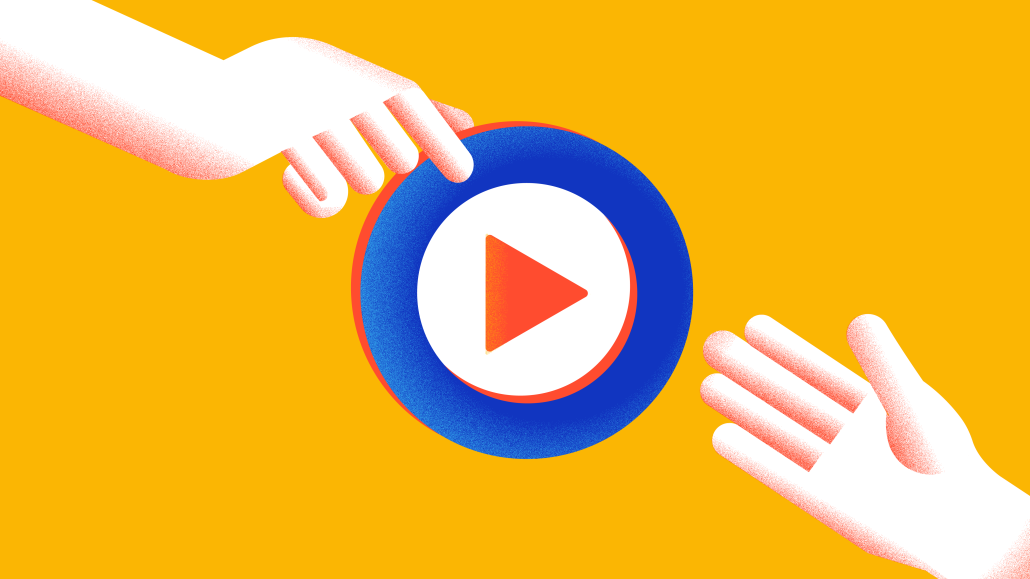Connect with execs from The New York Times, TIME, Dotdash Meredith and many more

Sponsored by QuickFrame by MNTN
While video marketing might be most often associated with consumer-facing efforts, B2B brands and marketers are increasingly employing video campaigns to generate leads and build connections with clients.
According to research from Wyzowl, 86% of marketers say video has helped them generate leads, and 81% say video has helped them increase sales. For B2B campaigns, videos illustrating how a product or service solves a company’s problems are the most likely to resonate with prospects. Like consumer-facing video campaigns, setting campaign goals and defining target audiences is foundational to successful B2B videos — but these efforts also require their own approach.
“B2B brands have been playing out of the B2C playbook for a long time, and now are really trying to break out of that,” said Max Berns, lead customer success manager at QuickFrame by MNTN. “Video is a really effective way to grab someone’s attention on a platform like LinkedIn. B2B brands are investing in video and seeing where these videos can work on different platforms.”
Laying the groundwork for effective B2B campaigns
While both B2B and B2C brands use video to grow brand awareness and trust, advertisers’ video tactics and formats are not necessarily interchangeable.
Defining the specific goals and KPIs for each video is critical for teams to determine which videos to create and how, while defining the target audience — for instance, decision-makers versus end users of a product or service — often informs the video narrative and distribution strategy.
According to Berns, B2B campaigns should prioritize education and discovery as prospects strive to learn more about an organization’s products or services.
For instance, an upper-funnel brand awareness campaign might include video ads about a company’s history or testimonials from past clients. These videos may best be suited for a platform like LinkedIn to reach other professionals. In another example, it might be most effective to distribute informational videos or tutorials through emails to customers.
Seasonality is also a key consideration in the B2B space.
“Recognizing when your customers are building their budgets is really important, whether that is in Q4 or Q1,” explained Berns. “You want to ramp up spending before budgets wrap for the following year, making sure that you’re getting as many eyeballs as possible on your product.”
Shaping video narratives for B2B audiences
Creative approaches to video campaigns differ based on several factors, including industry, audience and goals.
In some cases, B2B brands — particularly those that offer intangible services, tools or apps — use explainer videos to describe customer problems and highlight their solutions. With case study videos, B2B brands establish credibility through first-hand testimonials from clients that represent the target demographics well.
Depending on the part of the funnel the videos are intended for, the information presented can be broad or more granular. Further down the funnel, direct response videos produced for specific platforms include clear calls to action to drive leads or sales.
“Audiences, especially in the B2B space, are especially receptive to testimonials and direct response videos,” Berns said. “We’re more inclined to be engaged by a product when we see or hear someone who has had a positive experience with it.”
Culture videos showcase organizations from the inside out, depicting a company as accessible and trustworthy. These videos often focus on a brand’s people or core values and serve several purposes depending on the context.
“When you use a platform like LinkedIn effectively, you can target the brands and customers you’re trying to work with and still highlight tons of information around your company,” Berns explained. “You can have a video interview with a C-level executive, and that will help with building your brand and recruiting while still focusing on other KPIs in the same campaign.”
How brands are measuring success with video ads
To ensure the effectiveness of their video efforts, B2B marketers are routinely testing, measuring and analyzing campaign performances. Different types of campaigns across the funnel will have other KPIs and metrics.
Additionally, engagement metrics like video completion rates indicate when a team needs to update or refresh ad creative. Doing so ensures that audiences aren’t bored by repeatedly seeing the same ad.
To save time and money, Berns recommends companies bundle several creative iterations in one shoot and incorporate creative refreshes in the post-production process. Using creator marketplaces and localized production solutions are other ways marketers can cut costs associated with video campaigns.
By testing videos and evaluating ad metrics, marketers can draw insights — from what types of campaigns most resonate with audiences to seasonal trends with specific offerings or verticals.
“The more content that you’re putting out into the world, the more learnings and data that you’re getting back,” Berns said. “So the more that you’re testing and learning upfront, the better you’ll be able to optimize your campaigns in the future.”
Sponsored by: QuickFrame by MNTN
More from Digiday

YouTube’s AI slop crackdown has creators concerned, marketers cheering
Despite the potential crackdown, both creators and marketers broadly view YouTube’s updated policies as a positive move. They believe it indicates that the platform is paying attention to the ways creators are using AI — and that it’s open to AI tools that don’t result in the propagation of so-called “AI slop” videos.

Generative AI sparks brand safety concerns marketers know all too well
Despite concerns around brand misuse and IP, most marketers are sticking to traditional strategies.

‘Production is a big topic right now’: With AI moving beyond media, Publicis turns toward creative
The holdco is positioning AI as core infrastructure for ad production not just media buys.








